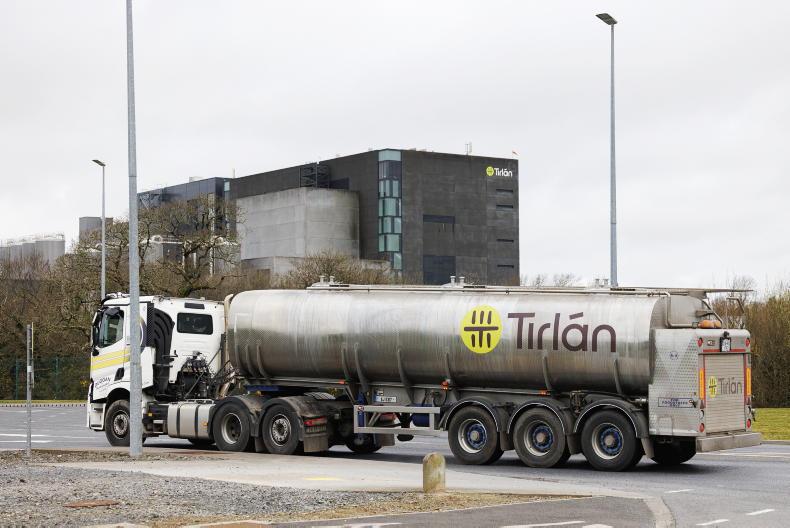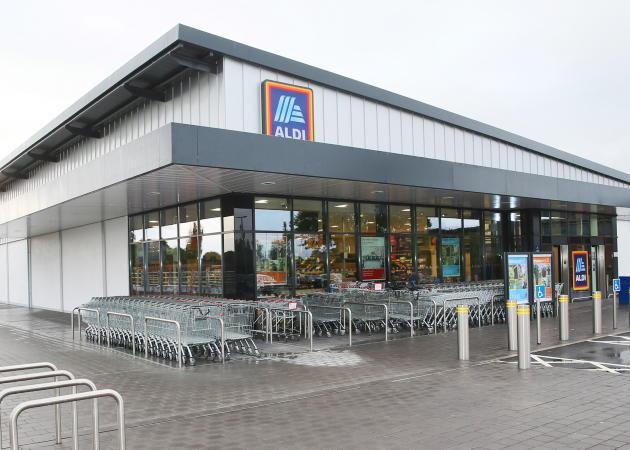Winter milk dairy producers have experienced significant changes in the cost of production over the last three to four years, with unprecedented fluctuations in the costs of inputs, particularly between the years 2021 and 2022.
This led to an increase of €463 in the costs associated with keeping the winter milk cow from 2021 to 2022 and we know from previous analysis costs remained similar for 2023. High milk prices mitigated the effects on margins in 2022.
However, a substantial drop in milk market returns during 2023 saw a significant drop in dairy farm income within the year. Market and weather effects have continued to put pressure on margins through the first half of 2024, albeit with some easing of the unit price of key farm inputs.
With such rapid and wide fluctuations in price and output costs and values, it can be difficult to gauge the underlying trends in farm practices and efficiencies, and their effects on financial performance.
Benchmarking Analysis
As highlighted, input costs have increased substantially in recent years, yet there remains considerable variability in costs and profit margins among farms within the same year.
Previous analysis indicates that this variation is not primarily attributed to factors like farm scale or soil type; rather, it is largely influenced by farm management decisions and practices.
Therefore, it is essential to investigate why some winter milk farms achieve better financial performance than others. The goal here is not to set unrealistic targets for individual farms, but to gain insight into management practices that can enhance profit margins at the farm level.
With this objective in mind, we have recently analysed the differences between the top 10% and bottom 10% of winter milk farms in the eProfit Monitor, based on data from 2023. The difference in net margin per cow between the high and low-margin farms stood at €1,541, with the low-margin farms having a negative return for 2023.
While we should refrain from drawing conclusions about national average costs or margins from this data, the trends and outcomes offer valuable insights into effective management strategies. Table 1 shows the farm performance trends for average, top 10% and lowest 10% of farms, ranked on margin per cow.
Physical Performance
Farm scale and whole farm stocking rates were relatively consistent across the high and low ranking groups, although milking platform stocking rate was 0.44 LU/Ha higher on the bottom 10% of farms at 4.13 LU/Ha compared to 3.69 Lu/Ha of the top 10% of farms.
The bottom 10% of farms had a greater reliance on purchased concentrate, feeding an extra 367kg per cow; although when comparing the top 10% of farms to the bottom 10%, the former produced an additional 74 kg of milk solids per cow (an increase of 162 kg/Ha) and utilised an extra 1.55 tonnes of dry matter (DM) of forage per hectare.
Notably, 61% of the overall difference in net margin between high and low-profit farms was related to greater gross output per cow.
Compared to farms with low net margins, higher margin farms utilise more pasture to produce extra milk sales all while feeding a lower level of supplement. We further examined this relationship across the entire dataset by plotting pasture utilisation level versus net margin per ha (Figure 1).
The outcomes showed a clear and consistent trend of extra pasture utilisation leading to better margins.
Cost control
Higher margin farms have lower variable and fixed costs indicating better cost control across a range of categories. Fixed costs (including paid labour) contributed to 27% of the margin difference, while variable cost disparities accounted for 12%. Interestingly, 90% of the difference in variable costs between the high and low margin farms was explained by purchased concentrate.
High margin farms had a 15% higher spend on fertiliser which doesn’t come as a surprise when you see the increased focus on the total forage utilised per hectare.
Costs associated with contractors, machinery (running, repair and depreciation), appear to play a significant role in the profit margins between high and low-margin farms. Hired labour and land lease cost difference
s between the groups were minimal only explaining 2% of the total net margin difference.

Cows exiting the 32 unit fast exit parlour on the farm of Patrick Brennan and his son Padraig at Lurgan Ross, Ballingarry, Roscrea, Co. Tipperary. \ Odhran Ducie
Low margin farms found themselves higher in costs across a large proportion of the cost categories suggesting a need for a deeper analysis of cost control by category.
Conclusions
Increased pasture utilisation, coupled with enhanced milk solids production and effective cost management, can lead to improved financial outcomes for winter milk farmers.
The data indicated that the amount of concentrate feed is not a strong indicator of farm profitability.
Additional milk solids
To boost margins through additional milk solids, it is essential to focus on optimising
pasture intake in the paddocks and ensuring high-quality winter forage, rather than relying solely on increased purchased feed.
Therefore, it is crucial to ensure that daily operational decisions align with the broader annual farm strategy to enhance pasture utilisation and control costs.
Maintaining this alignment should be a continuous priority to improve cost efficiency and profitability at the farm level.
Winter milk dairy producers have experienced significant changes in the cost of production over the last three to four years, with unprecedented fluctuations in the costs of inputs, particularly between the years 2021 and 2022.
This led to an increase of €463 in the costs associated with keeping the winter milk cow from 2021 to 2022 and we know from previous analysis costs remained similar for 2023. High milk prices mitigated the effects on margins in 2022.
However, a substantial drop in milk market returns during 2023 saw a significant drop in dairy farm income within the year. Market and weather effects have continued to put pressure on margins through the first half of 2024, albeit with some easing of the unit price of key farm inputs.
With such rapid and wide fluctuations in price and output costs and values, it can be difficult to gauge the underlying trends in farm practices and efficiencies, and their effects on financial performance.
Benchmarking Analysis
As highlighted, input costs have increased substantially in recent years, yet there remains considerable variability in costs and profit margins among farms within the same year.
Previous analysis indicates that this variation is not primarily attributed to factors like farm scale or soil type; rather, it is largely influenced by farm management decisions and practices.
Therefore, it is essential to investigate why some winter milk farms achieve better financial performance than others. The goal here is not to set unrealistic targets for individual farms, but to gain insight into management practices that can enhance profit margins at the farm level.
With this objective in mind, we have recently analysed the differences between the top 10% and bottom 10% of winter milk farms in the eProfit Monitor, based on data from 2023. The difference in net margin per cow between the high and low-margin farms stood at €1,541, with the low-margin farms having a negative return for 2023.
While we should refrain from drawing conclusions about national average costs or margins from this data, the trends and outcomes offer valuable insights into effective management strategies. Table 1 shows the farm performance trends for average, top 10% and lowest 10% of farms, ranked on margin per cow.
Physical Performance
Farm scale and whole farm stocking rates were relatively consistent across the high and low ranking groups, although milking platform stocking rate was 0.44 LU/Ha higher on the bottom 10% of farms at 4.13 LU/Ha compared to 3.69 Lu/Ha of the top 10% of farms.
The bottom 10% of farms had a greater reliance on purchased concentrate, feeding an extra 367kg per cow; although when comparing the top 10% of farms to the bottom 10%, the former produced an additional 74 kg of milk solids per cow (an increase of 162 kg/Ha) and utilised an extra 1.55 tonnes of dry matter (DM) of forage per hectare.
Notably, 61% of the overall difference in net margin between high and low-profit farms was related to greater gross output per cow.
Compared to farms with low net margins, higher margin farms utilise more pasture to produce extra milk sales all while feeding a lower level of supplement. We further examined this relationship across the entire dataset by plotting pasture utilisation level versus net margin per ha (Figure 1).
The outcomes showed a clear and consistent trend of extra pasture utilisation leading to better margins.
Cost control
Higher margin farms have lower variable and fixed costs indicating better cost control across a range of categories. Fixed costs (including paid labour) contributed to 27% of the margin difference, while variable cost disparities accounted for 12%. Interestingly, 90% of the difference in variable costs between the high and low margin farms was explained by purchased concentrate.
High margin farms had a 15% higher spend on fertiliser which doesn’t come as a surprise when you see the increased focus on the total forage utilised per hectare.
Costs associated with contractors, machinery (running, repair and depreciation), appear to play a significant role in the profit margins between high and low-margin farms. Hired labour and land lease cost difference
s between the groups were minimal only explaining 2% of the total net margin difference.

Cows exiting the 32 unit fast exit parlour on the farm of Patrick Brennan and his son Padraig at Lurgan Ross, Ballingarry, Roscrea, Co. Tipperary. \ Odhran Ducie
Low margin farms found themselves higher in costs across a large proportion of the cost categories suggesting a need for a deeper analysis of cost control by category.
Conclusions
Increased pasture utilisation, coupled with enhanced milk solids production and effective cost management, can lead to improved financial outcomes for winter milk farmers.
The data indicated that the amount of concentrate feed is not a strong indicator of farm profitability.
Additional milk solids
To boost margins through additional milk solids, it is essential to focus on optimising
pasture intake in the paddocks and ensuring high-quality winter forage, rather than relying solely on increased purchased feed.
Therefore, it is crucial to ensure that daily operational decisions align with the broader annual farm strategy to enhance pasture utilisation and control costs.
Maintaining this alignment should be a continuous priority to improve cost efficiency and profitability at the farm level.











SHARING OPTIONS